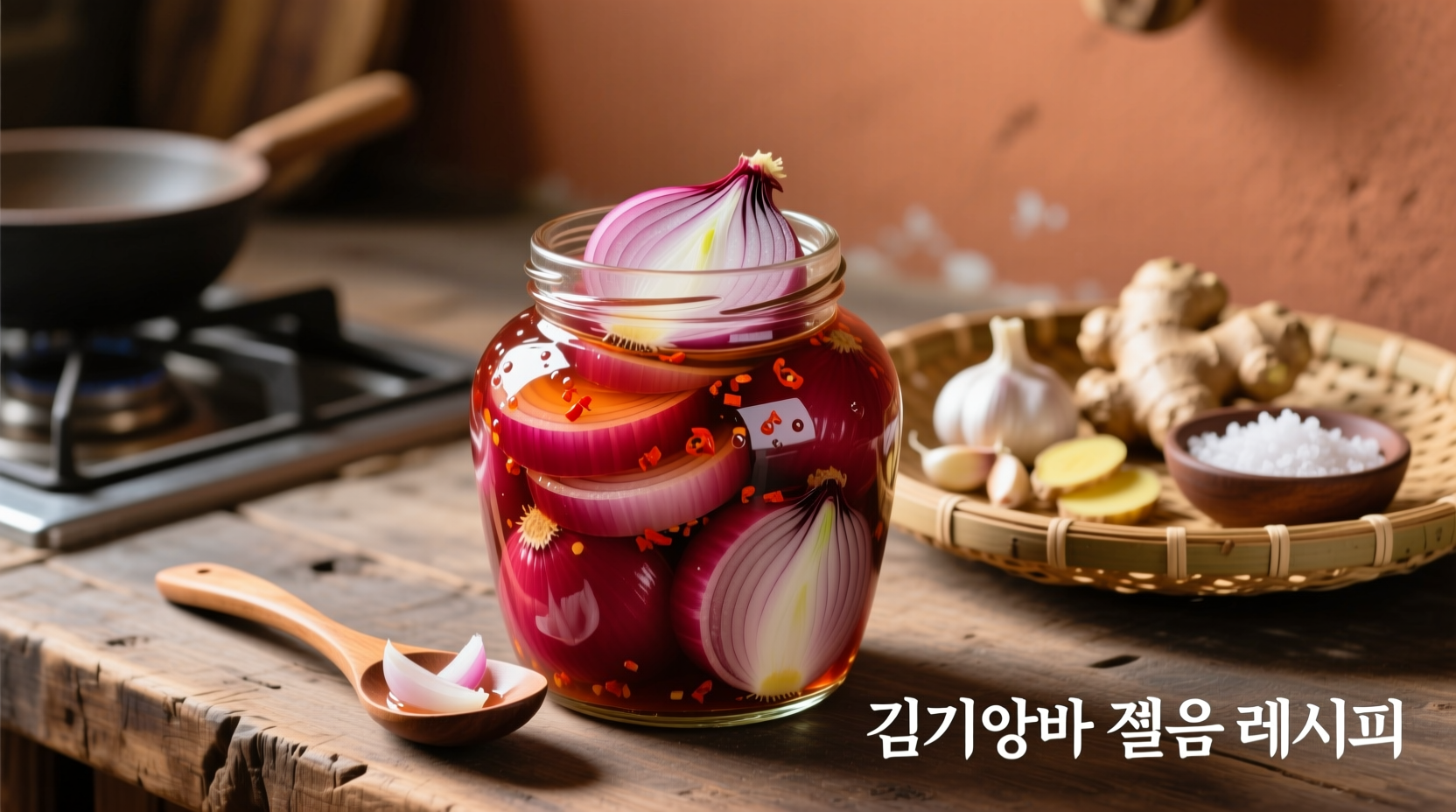Pickled red onions transform ordinary meals into extraordinary culinary experiences. These ruby-hued gems add a bright, acidic punch that cuts through rich flavors while maintaining their crisp texture. Unlike store-bought versions loaded with preservatives, homemade pickled red onions let you control the flavor profile and ensure maximum freshness.
Why This Red Onion Pickling Recipe Works
The magic happens through a simple acidification process where vinegar's acetic acid penetrates the onion cells, creating that signature tangy flavor while preserving freshness. According to USDA food safety guidelines, a proper vinegar-to-water ratio of at least 1:1 ensures safe preservation through refrigerator pickling (FDA Canned Food Regulations).
| Ingredient | Standard Recipe | Spicy Variation | Sweet Variation |
|---|---|---|---|
| Red onions | 2 large | 2 large | 2 large |
| Vinegar (5% acidity) | 1 cup distilled white | 1 cup apple cider | 1 cup rice vinegar |
| Water | 1 cup | 1 cup | 1 cup |
| Sugar | 2 tbsp | 1 tbsp | 3 tbsp |
| Salt | 1.5 tsp | 1.5 tsp | 1 tsp |
| Special additions | - | 1 dried arbol chili | 1 cinnamon stick |
Step-by-Step Pickling Process
- Prepare onions: Thinly slice 2 large red onions (¼-inch thickness) using a mandoline or sharp knife. Separate into rings and place in clean 16-oz mason jar.
- Create brine: In saucepan, combine 1 cup vinegar, 1 cup water, 2 tbsp sugar, and 1½ tsp salt. Bring to boil while stirring until dissolved.
- Pour hot brine: Carefully pour hot liquid over onions, ensuring complete coverage with ½-inch headspace. Remove air bubbles by tapping jar.
- Cool and store: Let cool to room temperature (about 1 hour), then seal and refrigerate. Wait at least 30 minutes before using, but best flavor develops after 24 hours.

Storage Guidelines & Food Safety
Properly stored pickled red onions maintain peak quality for 3-4 weeks in the refrigerator according to National Center for Home Food Preservation standards (NCHFP Refrigerator Pickles Guide). Always use clean utensils when handling to prevent contamination. Discard if you notice:
- Cloudiness or mold growth
- Foul odor
- Loss of crisp texture
Culinary Applications That Shine
These versatile pickled onions elevate dishes across cuisines:
- Tacos & Burritos: Essential topping for carnitas or fish tacos (traditional in Mexican street food)
- Salads: Adds brightness to grain bowls and green salads
- Sandwiches: Perfect counterpoint to rich meats like roast beef or pork
- Cheese Boards: Complements creamy cheeses like brie or goat cheese
Troubleshooting Common Issues
Problem: Onions remain too sharp
Solution: Extend soaking time to 48 hours or add 1 tsp baking soda to brine (neutralizes harsh compounds)
Problem: Cloudy brine
Solution: Use distilled vinegar instead of apple cider vinegar which contains natural sediments
Problem: Soft texture
Solution: Ensure onions are fully submerged and avoid over-boiling brine (excessive heat breaks down cell structure)
Flavor Variations to Explore
Once you've mastered the basic red onion pickling recipe, experiment with these professional chef techniques:
- Spicy Version: Add 1 dried arbol chili and 5 black peppercorns to brine
- Sweet-Tart Version: Substitute rice vinegar with equal parts sugar and water
- Herb-Infused: Add 3 sprigs fresh thyme or oregano during brine preparation
- Quick-Pickle Method: For immediate use, pour hot brine over onions and let sit 30 minutes before serving











 浙公网安备
33010002000092号
浙公网安备
33010002000092号 浙B2-20120091-4
浙B2-20120091-4